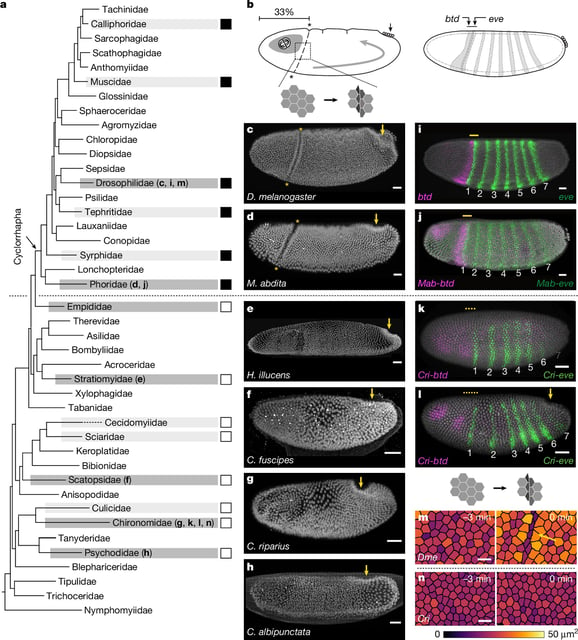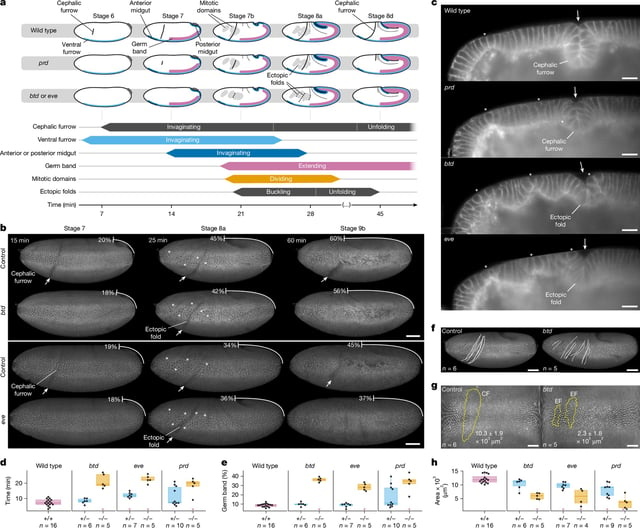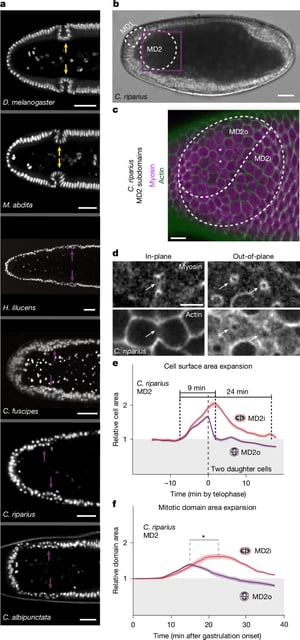Overview
- Two Nature studies identify the cephalic furrow in Drosophila as a structure that absorbs compressive stresses from cell divisions and tissue flows during gastrulation.
- Experimental perturbations show that removing the fold increases mechanical instability and tissue buckling in developing embryos.
- A minimal-parameter physical model calibrated with embryo data finds timing and position are decisive, with earlier formation near the embryo’s middle providing the strongest buffering.
- Comparative analyses report that fly species lacking the fold deploy widespread out-of-plane (downward) cell divisions to reduce surface area and prevent tissue collision and distortion.
- Researchers link shifts in buttonhead gene expression to the fold’s appearance across species and propose that mechanical stress may have guided its evolution, a view presented as a developing hypothesis.



